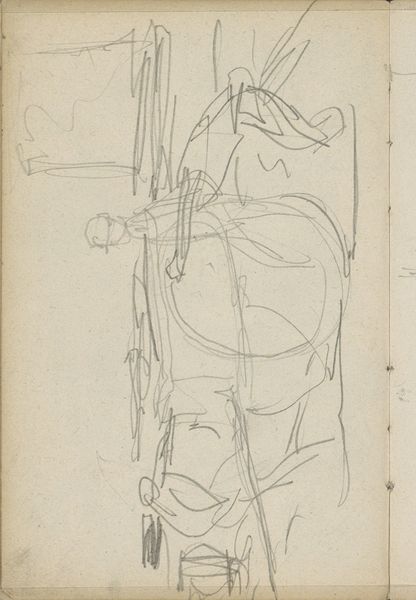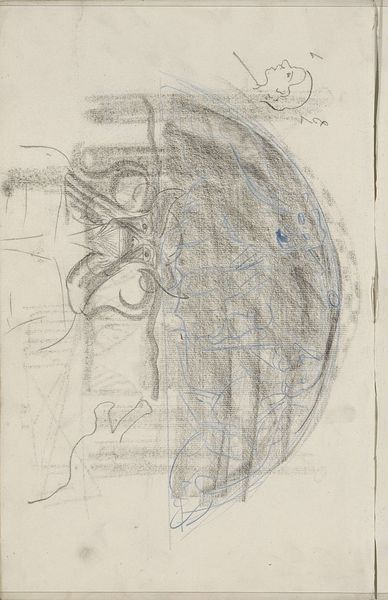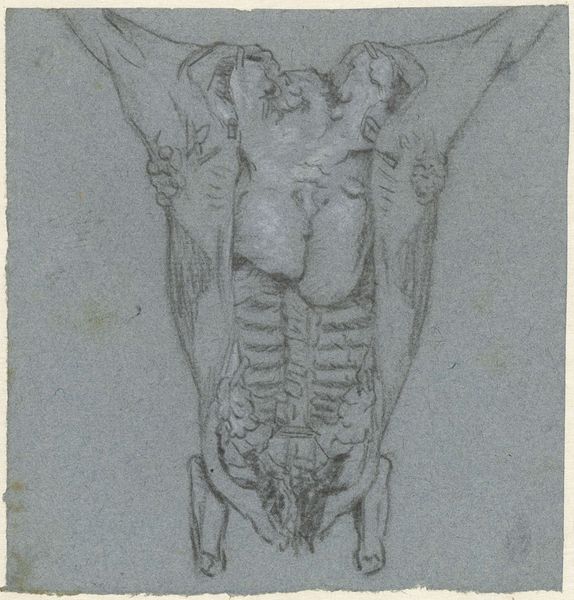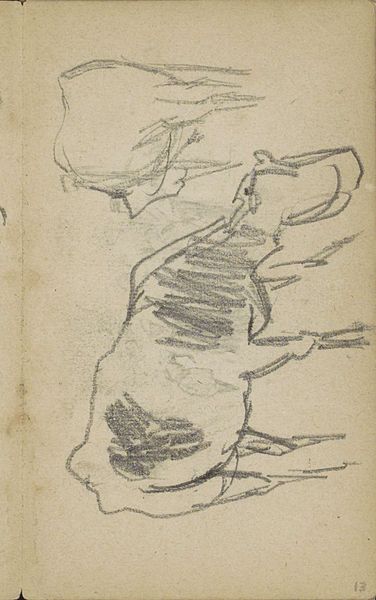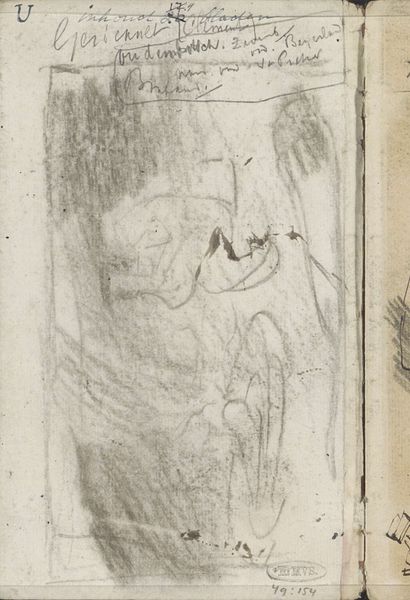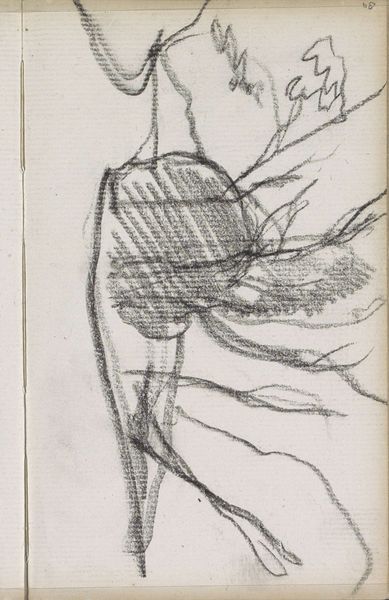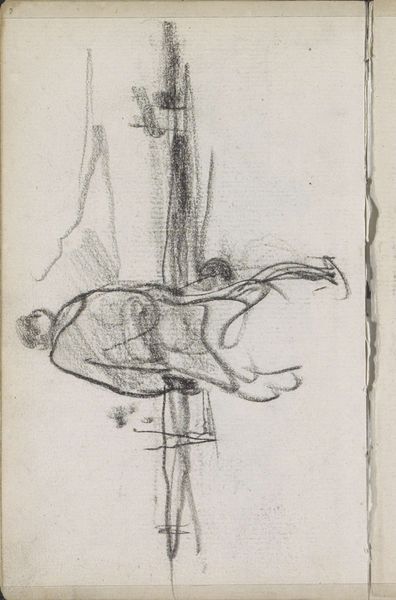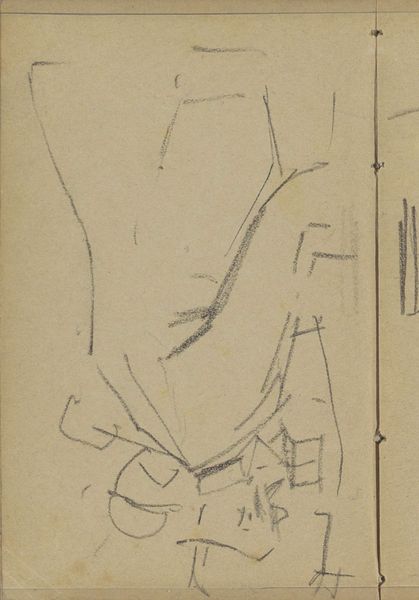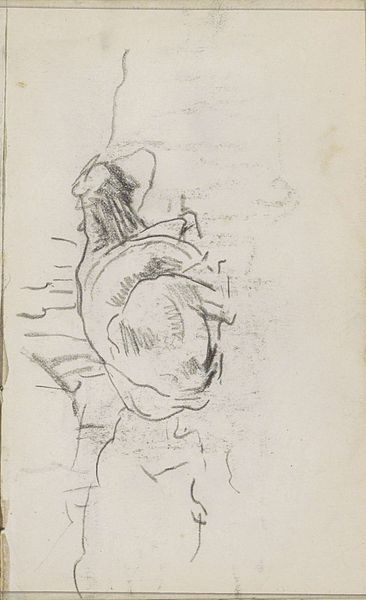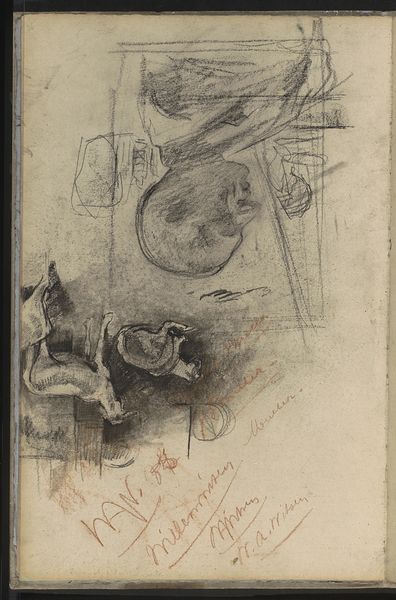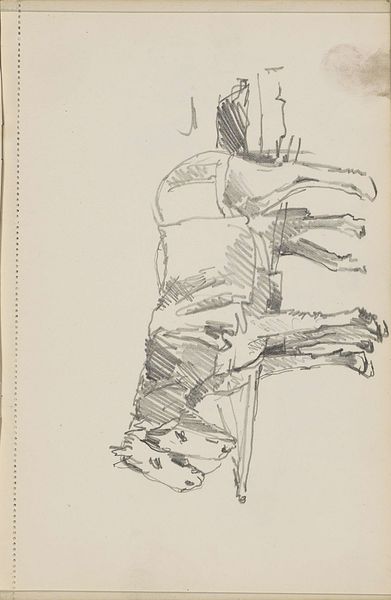
drawing, paper, pencil
#
portrait
#
drawing
#
pencil sketch
#
paper
#
pencil
#
genre-painting
#
realism
Copyright: Rijks Museum: Open Domain
Curator: Looking at this pencil drawing by Jozef Israëls, titled "Boy Seated on a Chair," dating roughly between 1834 and 1911, I immediately get a sense of youthful vulnerability. The stark, minimal lines almost feel… tentative. Editor: Indeed. The composition is interesting, isn’t it? The high angle, the slightly askew chair. It denies us any easy comfort, presenting an awkward visual, one might read, echoing the subject's age and pose. Notice the pressure of line. A semiotician may observe the visual symbolism of chair and adolescent in juxtaposition. Curator: Considering Israëls' broader artistic concerns, it's impossible to ignore how this work fits into the 19th-century realist movement, capturing an everyday moment of a young boy. Editor: True, but one must note that even realism relies heavily on artifice. The careful application of light and shadow serves not just mimesis, but expressive composition. We could look at other artists of that era too to trace influences. It is all linked. Curator: His sympathetic portrayals of children, particularly within the context of genre painting, offer social commentary on youth and domesticity during the era. What was the intention? What conversation did it promote about class and childhood experience? Editor: From a purely visual standpoint, look at the way the shading describes the boy's clothing. A simple series of marks renders such depth. Almost poetic the way he communicates. Curator: There’s an undeniable melancholy, and the unfinished nature emphasizes the precarious state of the boy, and even the era itself. Editor: Absolutely, it reveals a kind of aesthetic openness. The work beckons interpretation through a vocabulary only visual analysis can bring to our consciousness. Curator: This simple pencil drawing sparks interesting questions, even today, regarding the state of children and what society owes them. Editor: I think looking carefully, truly analyzing form, provides a powerful access to broader art-historical contexts. They always feed back into each other, the object, the subject, us.
Comments
No comments
Be the first to comment and join the conversation on the ultimate creative platform.
